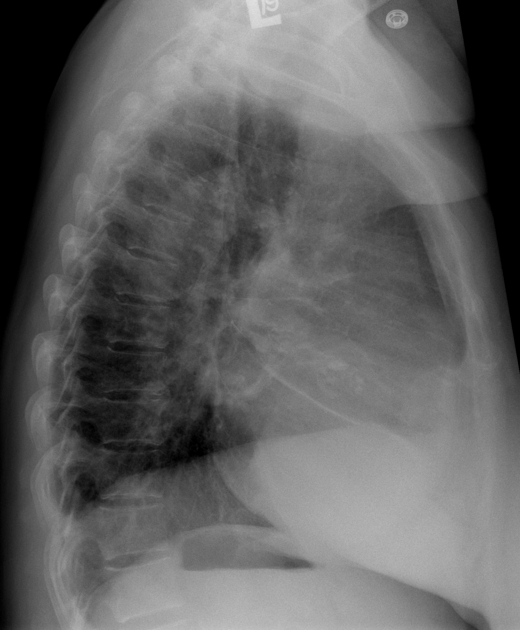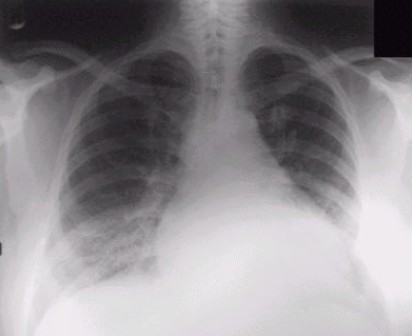Aortic stenosis chest x ray: Difference between revisions
| Line 12: | Line 12: | ||
*In case of severe aortic stenosis for a long time; the left atrium, pulmonary artery, and right side of heart may become enlarged too. | *In case of severe aortic stenosis for a long time; the left atrium, pulmonary artery, and right side of heart may become enlarged too. | ||
'''Shown below are images of chest X-rays showing left ventricular enlargement due to aortic stenosis:''' | |||
[[Image:Aortic_Stenosis_X_ray.jpg|300px|Lateral view of chest x-ray shows left ventricular enlargement due to aortic stenosis]] [[Image:LVH X ray.jpg|445px|Chest x-ray shows left ventricular Hypertrophy due to aortic stenosis]] | [[Image:Aortic_Stenosis_X_ray.jpg|300px|Lateral view of chest x-ray shows left ventricular enlargement due to aortic stenosis]] [[Image:LVH X ray.jpg|445px|Chest x-ray shows left ventricular Hypertrophy due to aortic stenosis]] | ||
<br clear="left"/> | <br clear="left"/> | ||
Revision as of 20:48, 7 January 2013
|
Aortic Stenosis Microchapters |
|
Diagnosis |
|---|
|
Treatment |
|
Percutaneous Aortic Balloon Valvotomy (PABV) or Aortic Valvuloplasty |
|
Transcatheter Aortic Valve Replacement (TAVR) |
|
Case Studies |
|
Aortic stenosis chest x ray On the Web |
|
American Roentgen Ray Society Images of Aortic stenosis chest x ray |
|
Directions to Hospitals Treating Aortic stenosis chest x ray |
|
Risk calculators and risk factors for Aortic stenosis chest x ray |
Editor-In-Chief: C. Michael Gibson, M.S., M.D. [1]; Associate Editor(s)-In-Chief: Mohammed A. Sbeih, M.D. [2]; Cafer Zorkun, M.D. Assistant Editor-In-Chief: Kristin Feeney, B.S. [3]
Overview
Chest X-ray may be used as a diagnostic tool in the evaluation of aortic stenosis. Findings associated with aortic stenosis include left ventricular hypertrophy and calcification of the aortic valve.
Chest X Ray
Chamber Enlargement:
- Chest X-ray may show hypertrophied left ventricle if there is aortic stenosis. In later stages of disease; the left ventricle dilates and the patient may have pulmonary congestion appears on X-ray.
- In case of severe aortic stenosis for a long time; the left atrium, pulmonary artery, and right side of heart may become enlarged too.
Shown below are images of chest X-rays showing left ventricular enlargement due to aortic stenosis:


Calcification:
- Calcification of the valve is found in nearly all adult patients who have significant aortic stenosis.
- If calcification of the aortic valve is present on a chest x ray in adult, the aortic valve gradient is usually greater than 50 mm Hg.